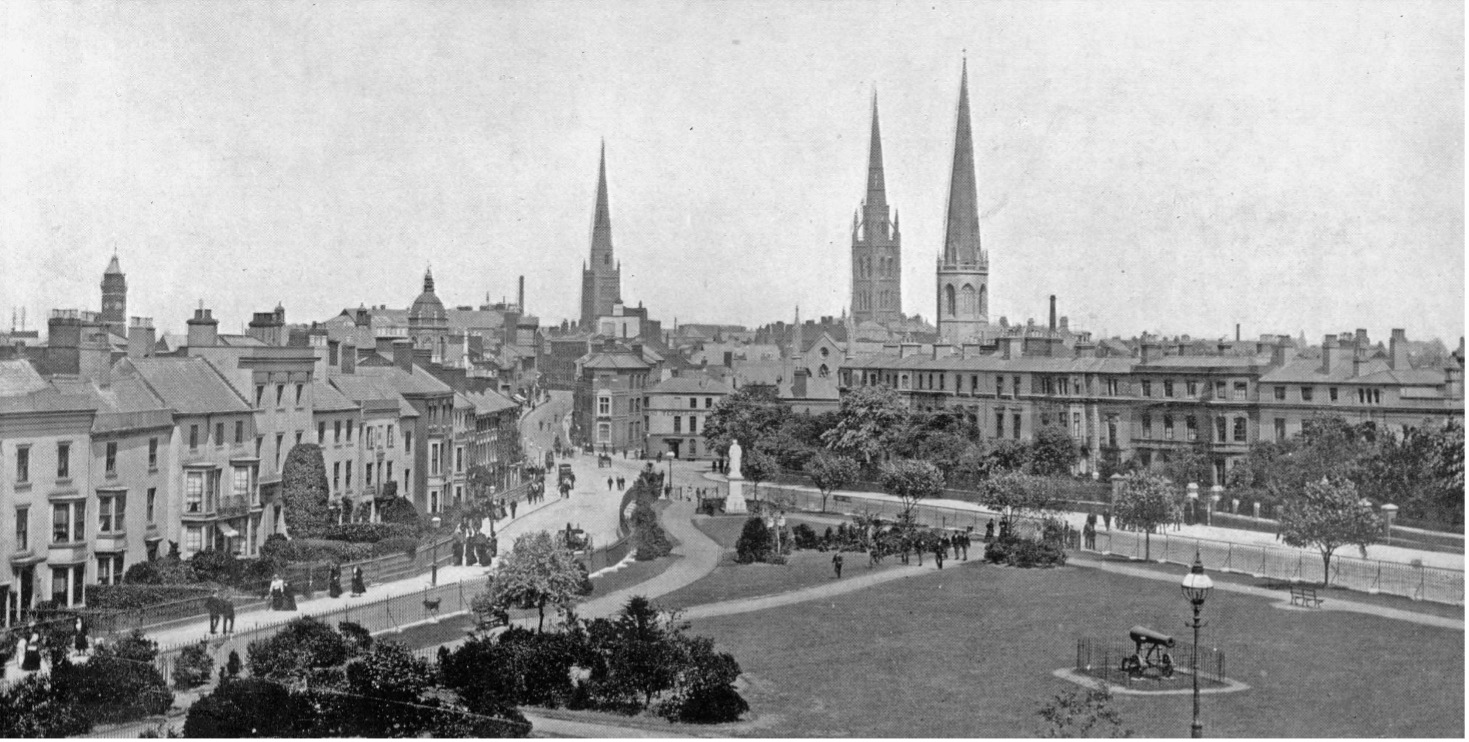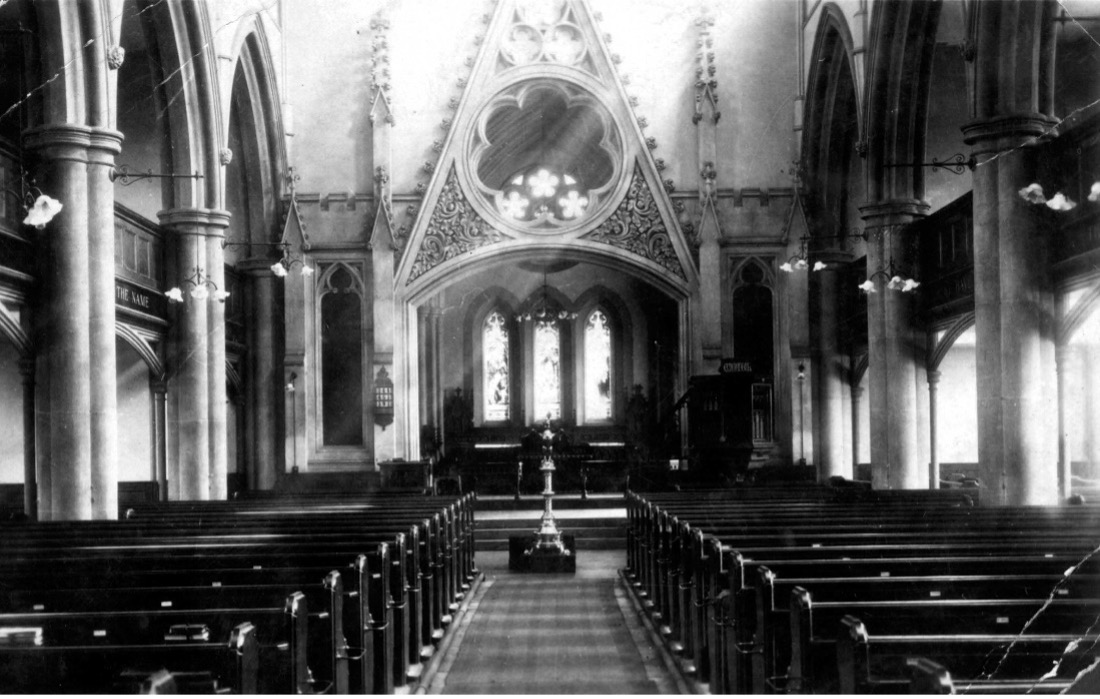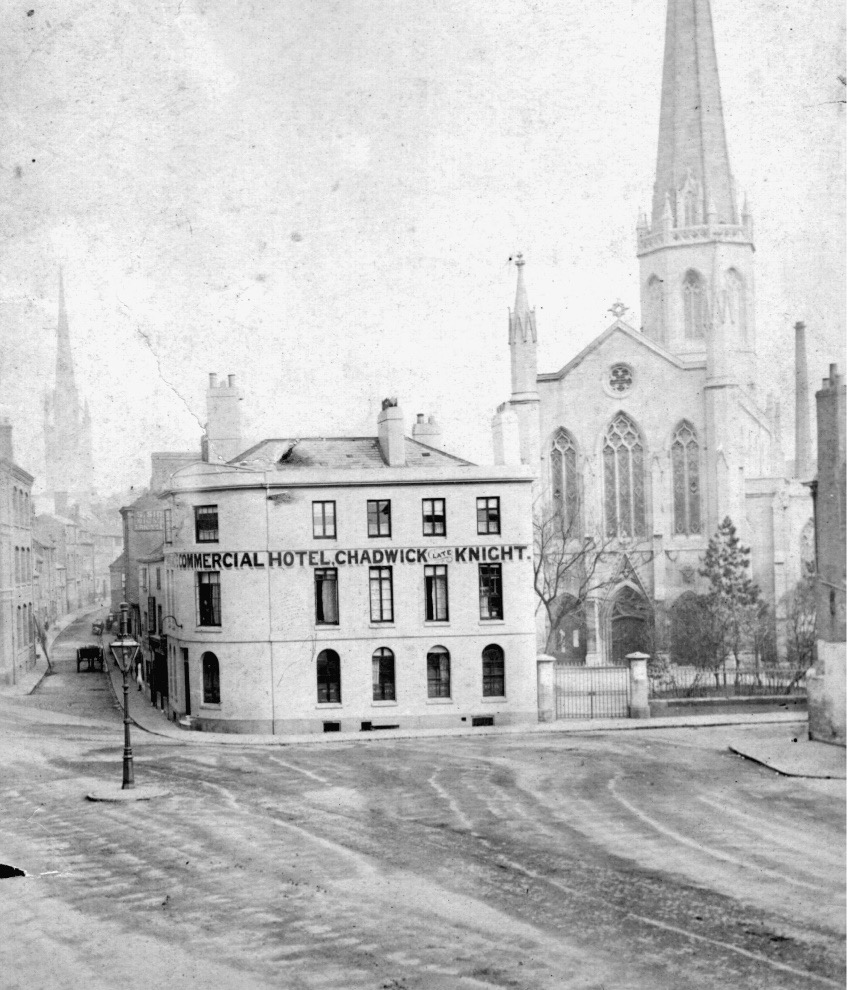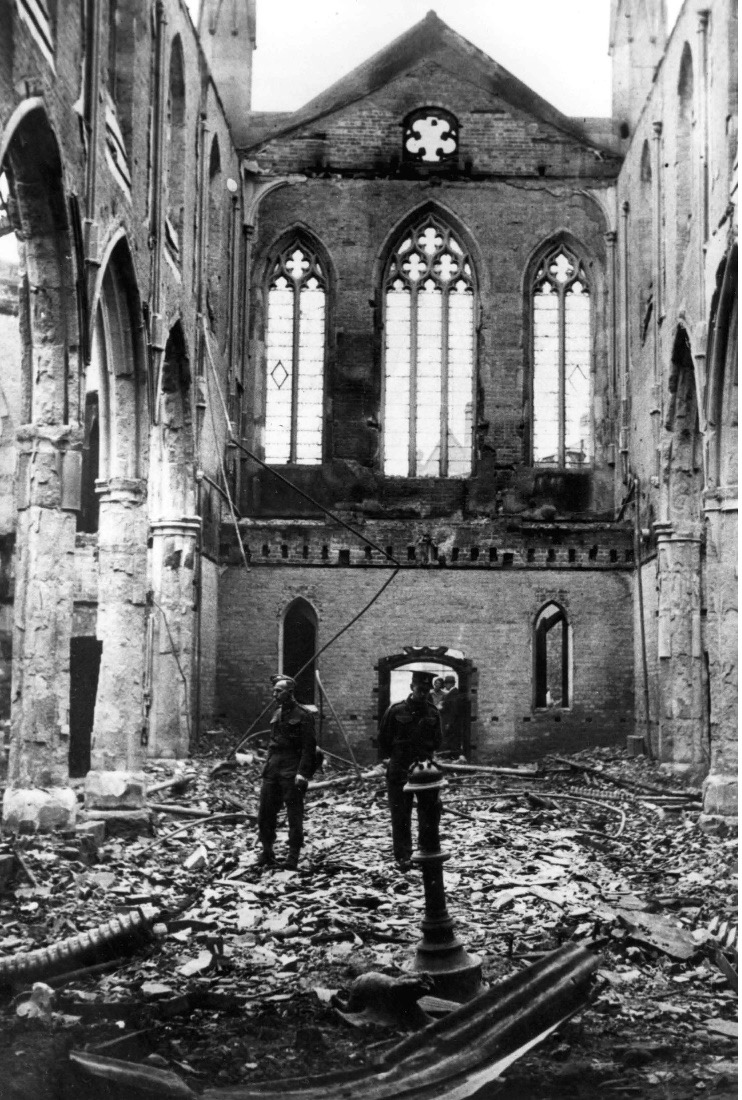Archive Blog: The Bombing of Christchurch in April 1941
10 November 2022

Reflecting on the World War II bombing of Christchurch for Remembrance Day 2022
Alongside the opening of Saranjit Birdi's Bombed: A Trilogy, we're marking Armistice Day by looking back on the bombing of Christchurch in April 1941. Discover the story of its destruction and restoration through resources from the Coventry Archives below.
When Christchurch was destroyed by German bombers in April 1941, GW Clitheroe, the vicar at Holy Trinity, was there to witness the destruction. “The most dramatic incident,” he wrote in recollection of the event, “was the picture made by Christchurch – the third of Coventry’s three spires – heavily ablaze, and the fire out of all control. I could see no-one near the scene. It was burning in strange isolation: I stood in silence for some minutes and passed on my way.” The fires could be seen from Tile Hill.

 Christchurch had been a notable part of the Coventry landscape since the fourteenth century. It was originally known as Greyfriars and had been given to the people of Coventry by Henry VIII after the Dissolution. The church was torn down, leaving only the tower and steeple intact, and for a long time the site served a number of different purposes. Perhaps the most unusual was its use in the eighteenth century as a pigsty. Peter Seager, the farmer who used it for this purpose, apparently boasted that he had the tallest pigsty in the country.
Christchurch had been a notable part of the Coventry landscape since the fourteenth century. It was originally known as Greyfriars and had been given to the people of Coventry by Henry VIII after the Dissolution. The church was torn down, leaving only the tower and steeple intact, and for a long time the site served a number of different purposes. Perhaps the most unusual was its use in the eighteenth century as a pigsty. Peter Seager, the farmer who used it for this purpose, apparently boasted that he had the tallest pigsty in the country.
A new church was proposed in 1829 and designs were drawn up by the Birmingham architect Thomas Rickman, who had also been instrumental in the design of Drapers' Hall and the restoration of Bond's Hospital. Encouraged by a bequest of two hundred guineas from the banker, William Bunney, the public appeal for funds eventually raised nine thousand pounds. The Church was built of Bath stone conveyed to the city by canal and was completed in 1832. In August of that year, it was consecrated under the name of Christchurch.
With the outbreak of World War Two, precautions were taken to protect Christchurch from enemy bombing raids. The windows of the parochial rooms were blacked out, and church services were moved to the daytime, when there was less risk of German attacks. An air raid shelter was built just behind the church that could hold almost a hundred people.

But the raid of April 1941 proved to be as deadly as the attack the previous November. An initial raid – short in duration – delivered thousands of firebombs, followed by high explosives; the second raid was longer and much more intense. Coventry and Warwickshire Hospital was bombed, and premises throughout the city centre destroyed. The Midland Daily Telegraph referred to it as an act of Nazi vandalism and suggested that the attack had happened because Coventry had vowed “to rise again and build itself anew” after the Blitz of November 1940.
Among the many other losses that April night was Christchurch. When the extent of the damage to the church was known, the Council had no other choice but to demolish the Victorian additions that had comprised the 1832 rebuild but there was considerable discussion in Council quarters about the spire and tower.
Although the possibility of demolishing them both had never been entirely discounted, there was concern about how the loss of one of the city’s famous “three spires” might affect public morale. Concerted effort was put into preserving the spire and tower instead. In May 1941 the architect Philip Chatwin was asked to assess their condition and later that month, the steeplejacks, Swinnerton and Son, investigated the practicalities of making the structure safe. In the end, it was suggested that the spire be made secure with a scheme of exterior steel bricks and uprights: at over six hundred years old, the oldest part of the church had been saved for the city.
The Luftwaffe continued to visit Coventry after April 1941, but the attacks were a lot less frequent and were never as intense. And after the war a new Christchurch emerged: re-located to Frankpledge Road, it became the centre piece of a new parish and was consecrated in 1958, four years before Coventry also got its new Cathedral.
![6. Detail from the logbook of 12th Battalion 'A' Company, [Home Guard] based at Tile Hill: “the fires we could see from here must have (been) Christchurch.”](/_userfiles/pages/images/News/Detail%20from%20the%20logbook%20of%2012th%20Battalion%20at%20Tile%20Hill.jpg)
Detail from the logbook of 12th Battalion 'A' Company, [Home Guard] based at Tile Hill: “the fires we could see from here must have (been) Christchurch.”